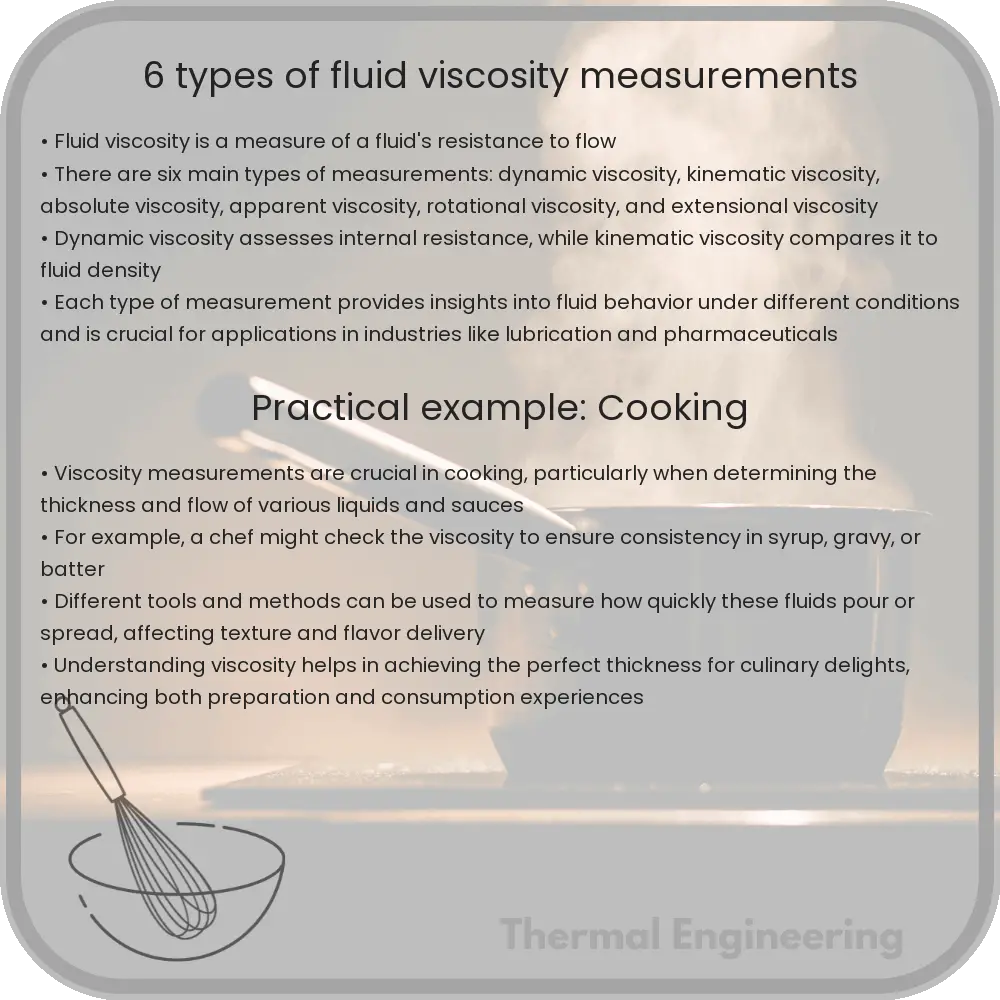Learn about fluid viscosity, its importance in engineering, and various methods to measure it, including capillary, rotational, and falling ball viscometers.

Understanding Fluid Viscosity and Its Measurement
Viscosity is a fundamental property of fluids which describes the internal resistance offered by a fluid to flow. This property is critical in various engineering and scientific applications as it influences how fluids behave under different conditions and in different systems. Measuring viscosity allows engineers and scientists to understand and predict how fluids will perform in processes ranging from simple piping to complex fluid dynamics in machinery. There are several ways to measure the viscosity of a fluid, each suited for different types of fluids and applications.
1. Capillary Viscometer
A capillary viscometer, often referred to as a U-tube viscometer, measures the viscosity of a fluid by observing the flow time of a known volume of fluid through a narrow capillary tube under the influence of gravity. This method is based on the Poiseuille’s law, which relates the flow rate, the pressure drop, the viscosity, and the dimensions of the tube. Capillary viscometers are widely used due to their simplicity and effectiveness in measuring the viscosity of Newtonian fluids.
2. Rotational Viscometer
An essential tool for determining the viscosity of non-Newtonian fluids is the rotational viscometer. In this method, a spindle or rotor is submerged in the fluid, and the resistance to the rotation, caused by the fluid’s viscosity, is measured. As the spindle rotates, the torque required to overcome the viscous drag provides a measure of the fluid’s viscosity. Rotational viscometers can accommodate a wide range of viscosities and are particularly useful for fluids whose viscosity changes under shear stress, like paints and lubricants.
3. Falling Ball Viscometer
The falling ball viscometer technique involves measuring the time it takes for a ball to fall under gravity through a fluid in a vertical tube. According to Stokes’ law, the terminal velocity of the falling ball is related to the fluid viscosity. The resistance provided by the fluid to the falling ball is proportional to the viscosity. This method is suitable for transparent fluids where the motion of the ball can be observed easily.
4. Vibrational Viscometer
Vibrational viscometers measure viscosity by observing the damping of a vibrating element immersed in the fluid. The damping effect exerted by the fluid is indicative of its viscous nature. These viscometers are particularly useful for fast and continuous measurements of fluid viscosity in process control and industrial applications.
5. Brookfield Viscometer
A specific type of rotational viscometer is the Brookfield Viscometer, which utilizes spring-driven rotation to measure fluid viscosity. It is especially popular in industries for its reliability and repeatability. The device calculates viscosity by measuring the torque on the spindle driven by a motor at selectable speeds. The Brookfield Viscometer is versatile, accommodating a variety of spindle shapes and sizes to adapt to different fluid viscosities.
6. Saybolt Viscometer
Primarily used for the petroleum industry, the Saybolt Viscometer measures the viscosity by recording the time it takes for a fixed volume of fluid to flow through a narrow tube at a controlled temperature. The Saybolt Viscometer provides readings in Saybolt Universal Seconds (SUS), which can be converted to standard viscosity units. This viscometer is particularly useful for quality control and assurance in the production and refining of oil.
Each of these viscosity measurement methods offers unique benefits and is suitable for specific types of fluids and applications. Understanding how these methods work and where they are best applied can lead to more accurate and effective handling of fluids in both industrial and research settings.